This article discusses using the Olympus 1.4 teleconverter for almost macro like magnification. I will consider some of the practical considerations that come into play when photographing butterflies, pointing out the strengths and limitations of using a teleconverter.
I love to photograph butterflies and using a long telephoto lens enables me to capture their behaviour in a less invasive manner than using a macro lens. Instead of creeping up to within 1ft of the insect and risk scaring it away; with the Olympus 100 – 400mm + 1.4 teleconverter, I can be between 4 and 5 feet away and still be able to achieve subject filling frames. This is an incredible achievement bearing in mind the minute size of insects. Take the Common Blue butterfly which has a wingspan of 28-36mm. If you’re lucky and find a small specimen, it can just about squeeze onto a full-frame 35mm sensor at the minimum focus distance. On a micro 4/3rds sensor, like my Olympus EM1X, the sensor is half the size of a full-frame sensor and the minimum focus distance is roughly twice as long as a full frame. This increased magnification on 4/3rd cameras is one of the reasons why I prefer to use my Olympus system over Canon, especially for capturing insects. However, the use of a long telephoto brings its own challenges and these are compounded when a teleconverter is added to the mix.
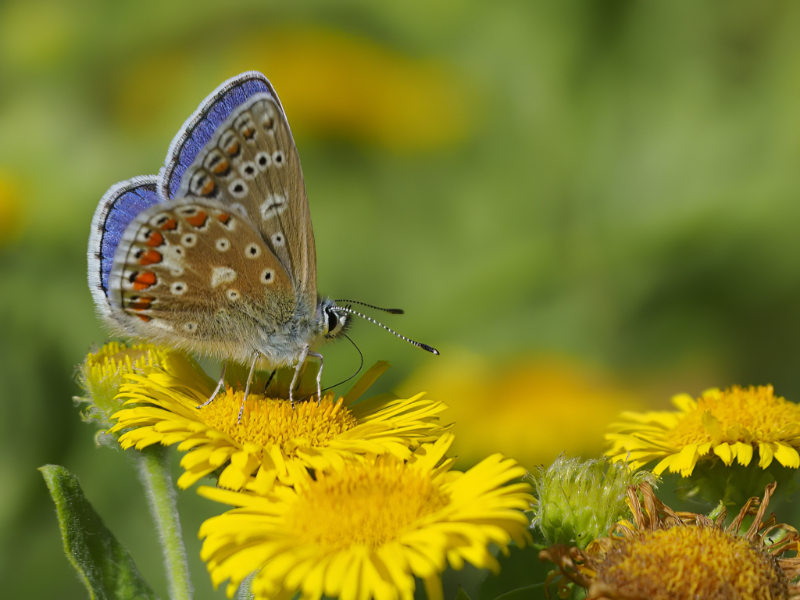
Common Blue – Polyommatus icarus – wingspan 29-38mm
Olympus 100-400mm and 1.4 teleconverter
Teleconverters degrade and soften images
While some photographers will use a 1.4 teleconverter without hesitation others are reluctant fearing that the trade-off between reach and image quality is too much of a compromise. To complicate matters further, some photographers are happy using a 1.4 teleconverter but will not use a 2.0 converter because they feel they have already reached the limit of acceptable image quality with the 1.4. It pays to do your own research on the teleconverter options that are available. Using teleconverters can certainly be beneficial in terms of increasing overall reach, something that wildlife photographers can never have enough of! The caveat is knowing the practical limitations of their use. I use the M.Zuiko MC-1.4 teleconverter and not the MC-20.
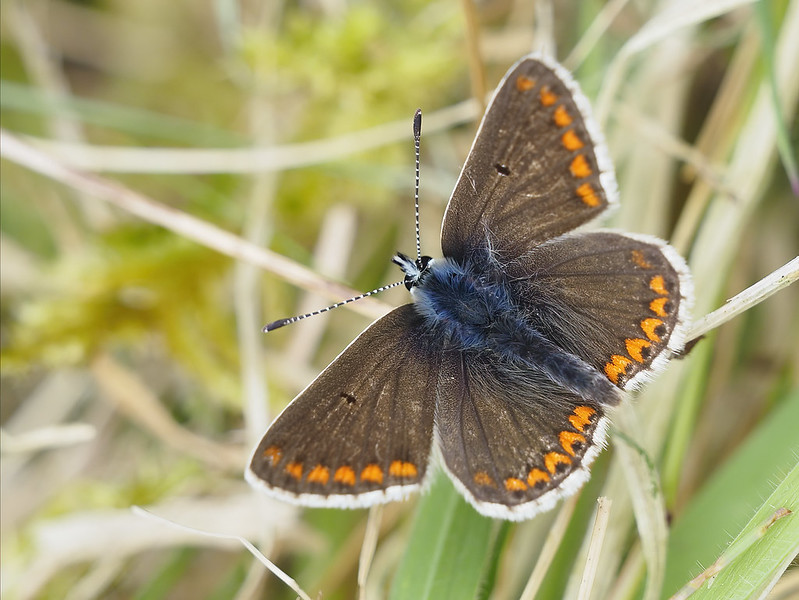
Brown Argus – Aricia agestis – wingspan 25-31mm
The 1.4 teleconverter on the Olympus 40-150mm f2.8 Pro is my favourite set up for butterfly captures. Even with the 1.4 teleconverter, the images are pin-sharp with no apparent image softness.
Loss of light
Using teleconverters does involve a loss of light. You will loose 1 stop of light using a 1.4 and 2 stops with a 2.0 converter. The first practical consideration should therefore be – is there sufficient light to shoot? If you have a f2.8 lens (like my Olympus 40-150mm pro) then you can afford to loose 1 (f4) or 2 stops (f5.6) – however if your lens is f.6.3 (like my Olympus 100-400mm) then you’ll find yourself shooting at f9. This may be a big problem for many wildlife photographers, such as those who like to shoot at dawn in low light or others interested in birds in flight. However, it’s not a problem for those mainly interested in insects and who likes to shoot in good light. This is because the increased depth-of-field brought about by using higher f numbers is actually an advantage when photographing tiny subjects. Photographing insects at the minimum focus distance using f numbers between f8 to f13 guarantees that a larger portion of the subject’s body is in focus while the close distance will most often throw the background out of focus, giving pleasant bokeh. Besides, if your photography is done in good light, then loosing 1 or 2 stops really shouldn’t pose a problem.
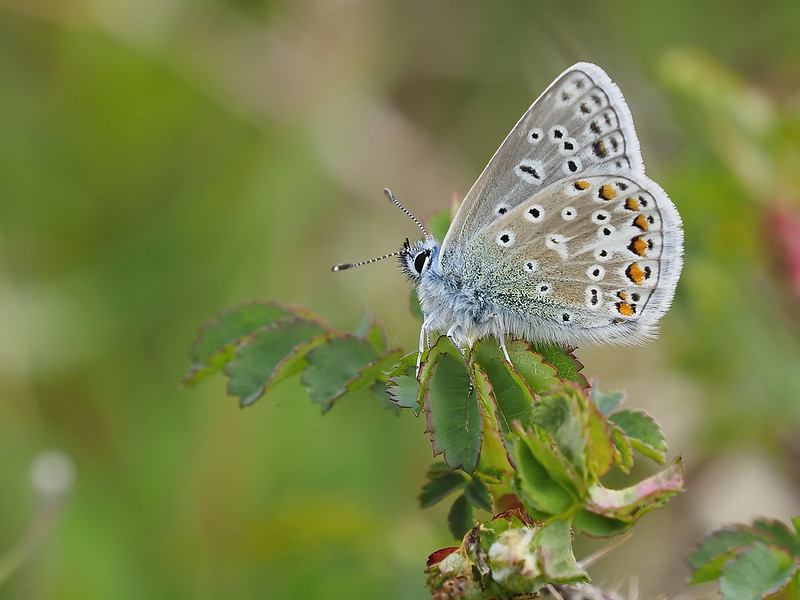
Common Blue – Polyommatus icarus – wingspan 29-38mm
Olympus 40-150mm f2.8 Pro with 1.4 teleconverter
The 1.4 teleconverter is not a problem for photographers mainly interested in insects and who shoot in good light.
Angle and quality of light
Using teleconverters for close-up increases the magnification but this can sometimes challenge the auto-focusing capability of a camera. Fortunately, most of the time my Olympus EM1X acquires excellent focus. On the few occasions it struggles I simply resort to good old fashioned manual focus. I say old fashioned but its great to have focus peaking turned on so that the focus area can be clearly highlighted!
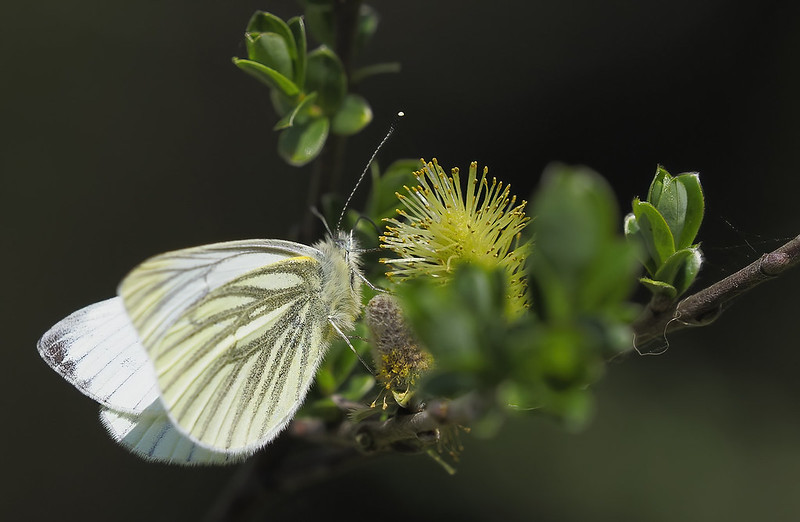
Green-veined White – Pieris napi – wingspan 40-52mm
With Olympus 40-150mm f2.8 Pro and 1.4 teleconverter you have a maximum aperture of f4, ample enough for low light while also giving sufficient depth-of-field.
Post processing
With the 1.4 teleconverter I have found slight softening of the images. Its hardly noticeable on the Olympus 40-150mm but more evident with the 100-400mm. In general, it’s not surprising to find that the higher the focal reach the softer the image. Another issue may be dealing with more aggressive cropping. In both cases image enhancements particularly with edge sharpness will need to be increased. I find Topaz DeNoise, DeSharp and/or Denosie Photo AI, all do an excellent job in this department.
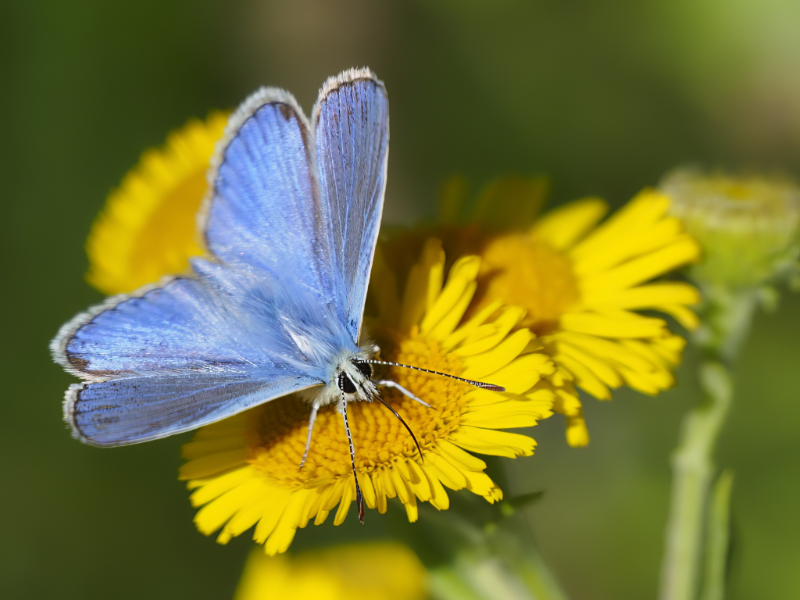
There is a slight softening of the image using the 1.4 teleconverter on Olympus 100-400mm. However, Topaz Photo AI, Topaz Sharpen or Topaz Denoise, all do an excellent job of sharpening. The AI in Topaz Photo is particularly impressive as it automatically applies a mask to the subject and only sharpens the specimen. In contrast Topaz Denosie and Sharpen will apply sharpening to the whole of the image although you have the option to apply a mask manually.
In the Field
Photographing butterflies with the 1.4 tele-converter worked out better than I had anticipated. The butterflies were very active, moving from flower to flower quickly. Once on a flower they tended to move about a little less quickly. Focusing and composing the shots was challenging, while I also needed to determine the best shooting angles in terms of lighting. I started off by shooting down on them and checking the accuracy of my auto-focusing. My typical setting was continuous auto-focus with sequential silent shutter at 18 frames-per-second. I used a single focus point to give me maximum control.
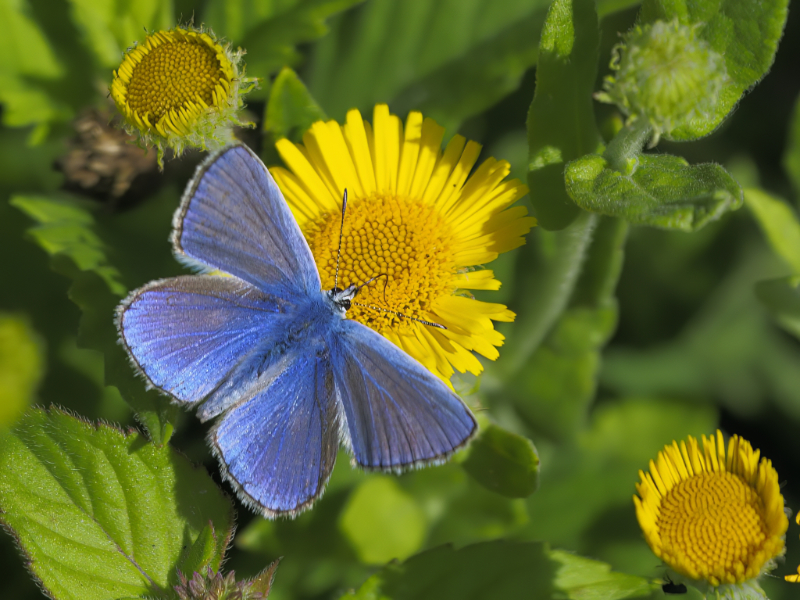
Common Blue – Polyommatus icarus – wingspan 29-38mm
Olympus 100-400mm and 1.4 teleconverter
I started off by shooting down on the butterfly and checking the accuracy of my auto-focusing
There were limitations but the trade-offs were worth taking. The Olympus 100-400mm has excellent close-focusing performance for such a long lens; you can focus very closely (down to just 1.3 meters (4ft.4 inches) even at 400mm). The maximum image magnification on this lens is an impressive 0.57x and that’s without a teleconverter. Add a 1.4 teleconverter and you get 0.81x – near to macro magnification, allowing excellent tele-macro opportunities. This provides a comfortable working distance from the insects. Furthermore, there is no need to encroach on their ‘circle of fear’ which results in less stressed insects and more natural behaviour. Sure, the loss of light compared to using a dedicated macro lens often means using higher ISO, between 800 and 1600 works often well without sacrificing too much dynamic range.
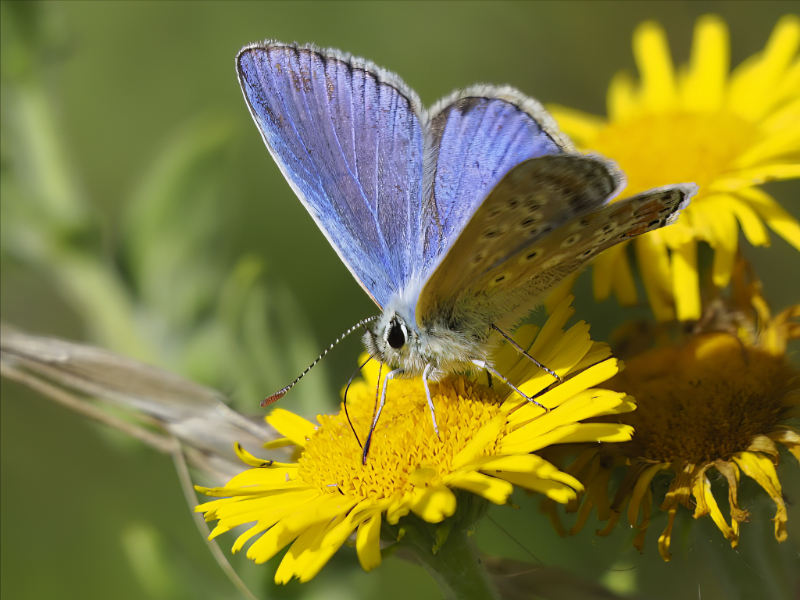
Common Blue – Polyommatus icarus – wingspan 29-38mm
Olympus 100-400mm and 1.4 teleconverter
The Olympus 100-400mm has excellent close-focusing performance for such a long lens
Conclusion
Overall, The MC-1.4 is an excellent teleconverter and used with my M.Zuiko PRO 40-150mm f/2.8 gave the sharpest results. This gives an equivalent filed-of-view of 112mm to 420mm at f/4. In contrast, add the 1.4 on the Olympus 100-400mm f5-6.3 and it can go up to an impressive 1120mm! I’ve found that using the teleconverter has significantly expanded the image potential of these two lenses. Used mainly for butterflies it performed wonderfully, with fast auto-focus and excellent image quality. I’ve also achieved great results when photographing other insects, such as dragonflies and beetles. The main downside is softening of images at 400mm. In such instances it’s better to either turn the magnification down to 300mm or else sharpen in-post using the excellent Topaz Photo AI. Understanding the limitations of using a teleconverter and spending some extra time in post can all play dividends.
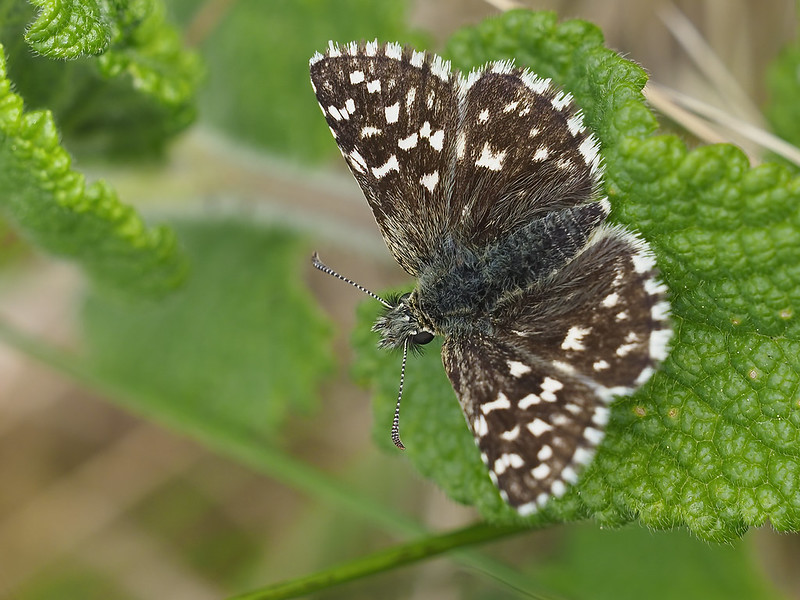
Grizzled Skipper – Pyrgus Malvaes – wingspan 23-29mm
Olympus 40-150mm f2.8 Pro and 1.4 teleconverter
My favourite butterfly, the Grizzled Skipper
Finally, below are the technical specs for the MC-1.4 teleconverter on the Olympus 40-150mm F2.8 Pro and the 100-400mm F5.0-6.3 IS:
M.Zuiko Digital ED 40-150mm F2.8 PRO
Maximum Focal Length – 210mm
(35mm Equivalent) – (420mm) at f4
Maximum Image Magnification – 0.3x
(35mm Equivalent) – (0.6x)
Maximum Aperture with MC-1.4 – F4
Miinimum Aperture – F22 -(diffraction kicks in at F13 approx)
M.Zuiko Digital ED 100-400mm F5.0-6.3 IS
Minimum Focal Length – 560mm
(35mm Equivalent) – (1120mm) at f9
Maximum Image Magnification – 0.57x
(35mm Equivalent) – 0.81x
Maximum Aperture with MC-1.4 – F7.1 (140mm) to F9.0 (560mm)
Minimum Aperture – F22 (diffraction kicks in at F13 approx)
* MC-20 – 2x Eq 1.15x!

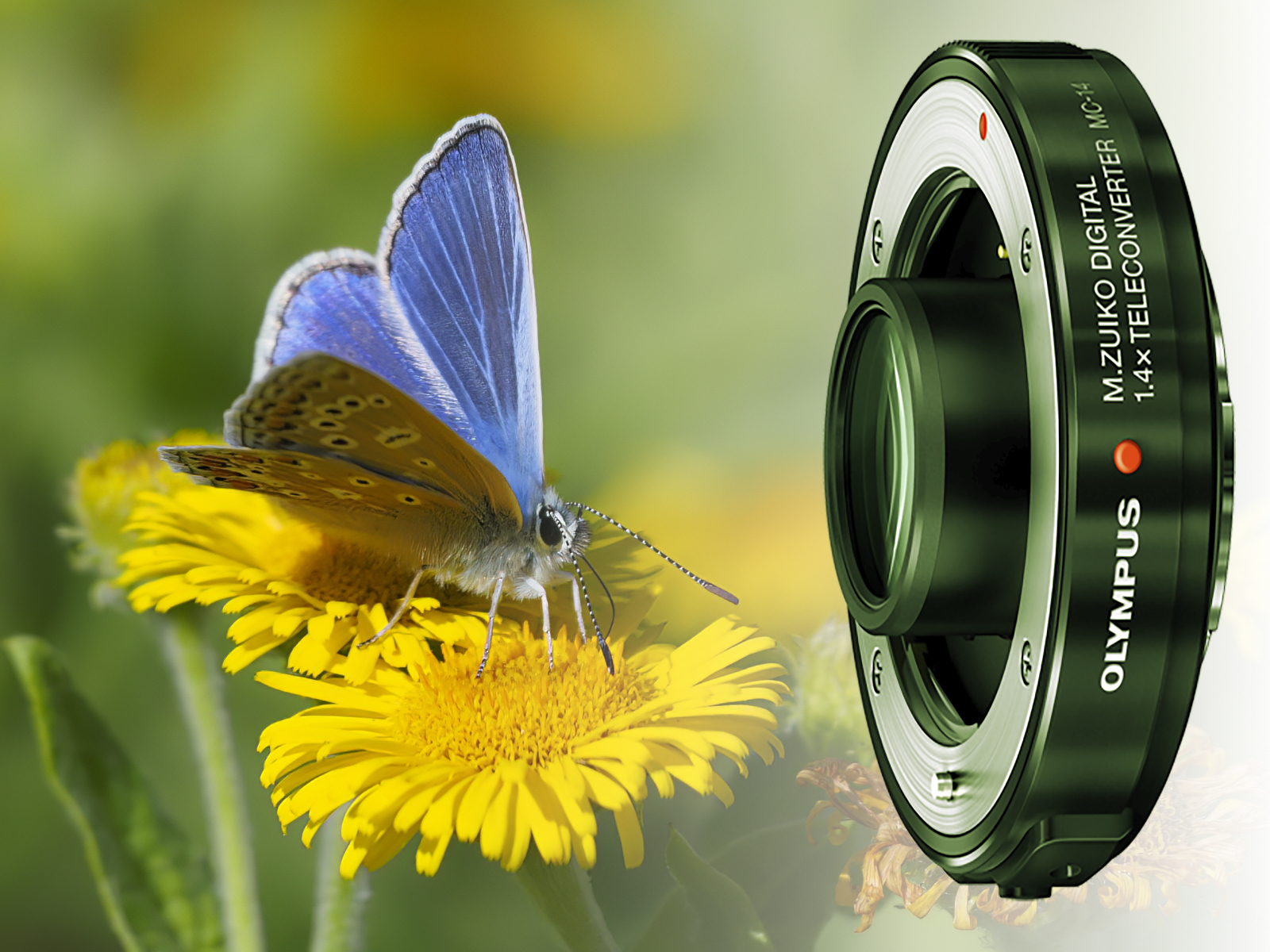
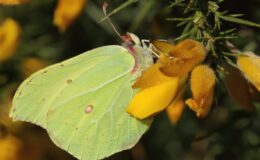
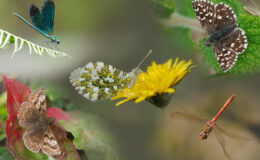
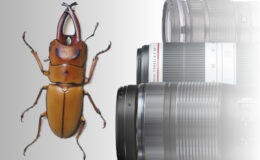
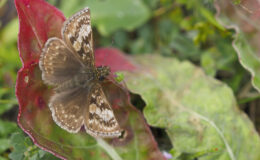
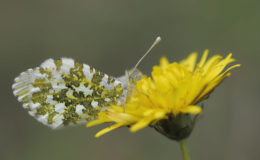
Leave a Comment